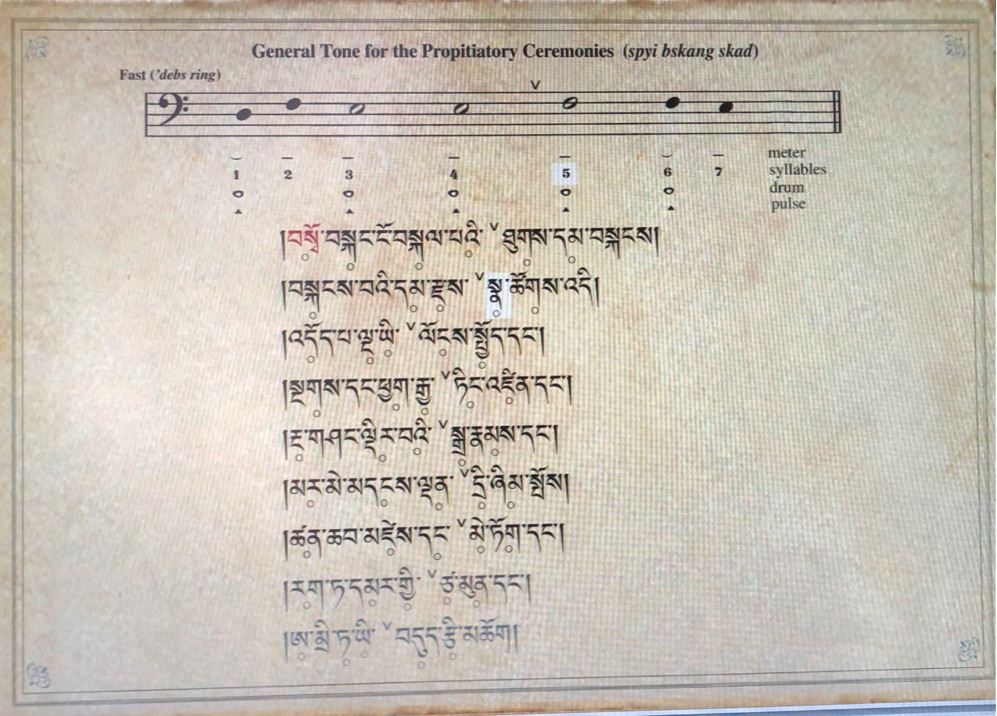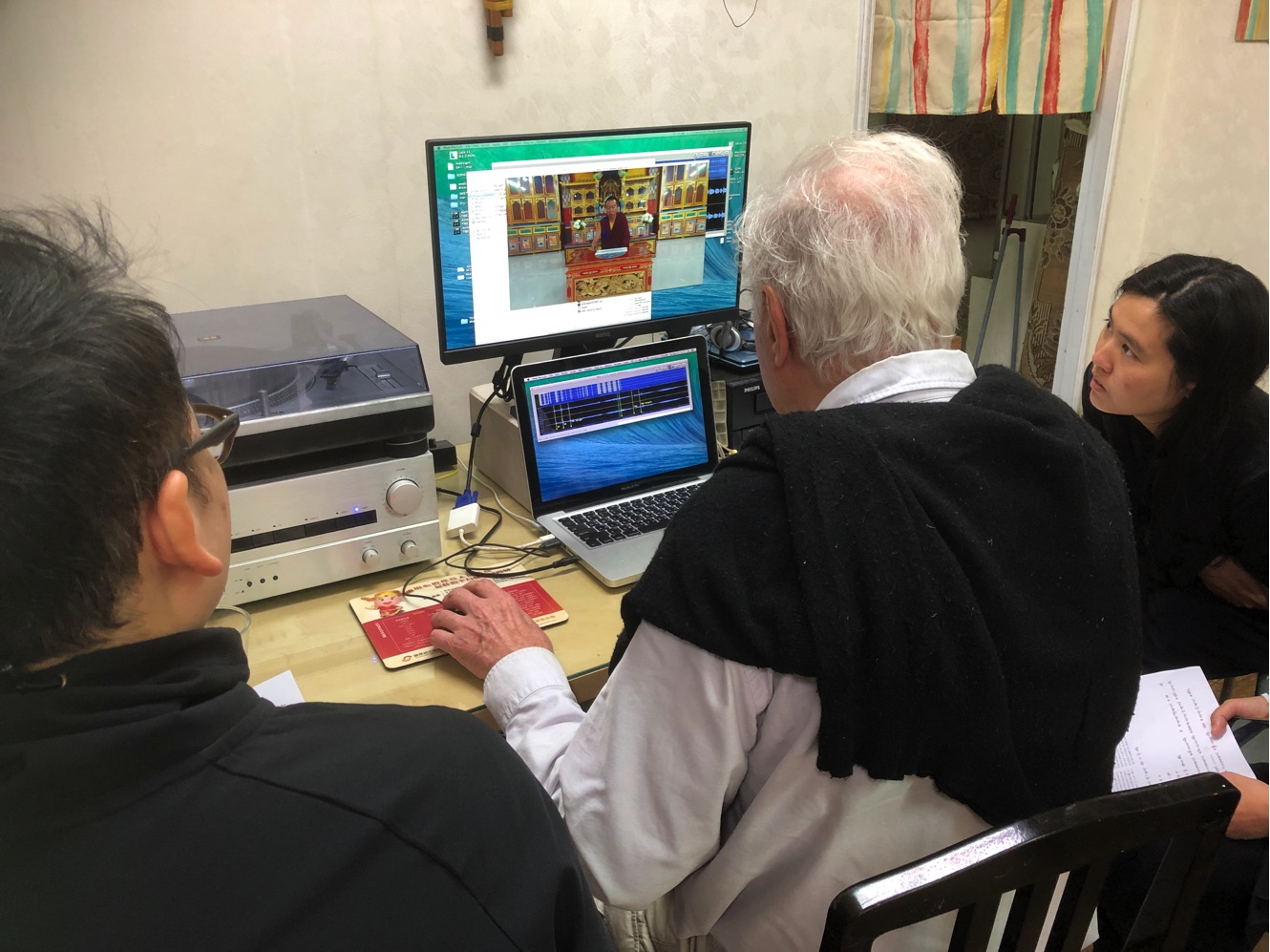We will soon start another cycle of classes in Tibetan Bön chanting in Taipei. In this post I explain more about the teacher and the content of the classes. Dr. Ricardo Canzio is a retired professor of Musicology at National Taiwan University and to my knowledge the world’s foremost scholar on Tibetan chanting and ritual music in the Anglophone / Western world. In-depth knowledge of the very esoteric traditions of Tibetan religious music is really hard to come by. I got to know musicologist Ricardo Canzio in 2007 in Taipei, after doing a search for materials on Tibetan chanting. I found extensive course material from professor Canzio at NTU, Taiwan’s top university. I contacted him with my questions, and it turned out he lived more or less around the corner. I was stupefied that such a repository of knowledge about Tibetan religious music was living nearby, and very willing to share his knowledge (I had tried to contact another prominent scholar on Tibetan ritual music, Ter Ellingson, with my questions, but never received a reply).
What’s more, I soon found out that Dr. Canzio was the producer of an album of Tibetan chanting that I regarded as one of the most intriguing and well-recorded albums I knew. Most of my collection consisted of albums by the Gyütö Tantric College, with some by the Drepung and Gyüme monasteries, and a few from other lineages. This one, from the Bön-Po, stood out from the rest. Why exactly is an interesting story which I will explain another time – you can listen to the album first.
Ricardo, as I came to call him soon after, helped me make sense of my fieldwork materials from Darhamsala and began sharing his vast knowledge of ritual music chanting. He explained various topics to me showing his own materials on his computer. He put Tibetan texts, their transliterations and the curly ‘music’ notations together with the actual sound files into a special multimedia .pdf format. It took him hundreds of hours to create such lucid visual tools to understand these chants, making use of different software programs. Painstaking work, which he was and is still doing. Meanwhile he told me stories about the collection of these materials, which began in 1970 in India and also continues to this present day: decades more of patient work, often under difficult conditions, compared to the situation today. Dr. Canzio is well past 80 now but is still undertaking research, mostly in Nepal, during regular stays in local monasteries.


Dr. Canzio’s early training was as a player and a composer. He was born in Argentina, and undertook music research in indigenous communities in the Amazon rain forest, which he also published on an LP album. He studied Sanskrit, Indian Philosophy and Religions and Indian Music in Benares (India) and received his Ph.D. from the School of Oriental & African Studies, University of London in 1979. He taught ethnomusicology at universities in Basel (Switzerland) and Paris (France) and was asked in the mid 1990s to help set up the Musicology Department at National Taiwan University, with Dr. Yuh-Fen Wang. Since that time he lives in Taiwan.
Dr. Canzio’s research output began with a translation of one of the first works in Tibetan dedicated to music. Not long ago a book was published that came out of that early work: the translation of Sakya’s Pandita’s Treatise on Music (Kathmandu: Vajra Books, 2019). Again and again Ricardo showed me his newer research, which is neither historical nor theoretical, but down-to-the ground analyses of the music chanted today in certain Tibetan (refugee) monasteries. It intrigued me, but the chants were very long and it did not seem likely I could learn to chant them myself. I had struggled to learn the subfundamental Tibetan chanting of the Gyütö and other schools since the mid-1990s, without much succes. I finally decided to try to learn one short chant for which I received detailed instructions from a chant master in Mundgod, India, in 2017. For that research I benefited greatly from Ricardo’s many pointers how to approach this task of collecting material.

Although I know could chant an actual prayer with the correct pronunciation and melody, many questions remained: there was still a large gap between the theoretical knowledge we discussed and the things that I read, and the recordings I listened to. I was looking forward to Ricardo’s publication, where I would certainly find many more answers and have the possibility to go over the audio and texts again and again.
Then during a visit in 2022, I asked Ricardo if he would be willing to teach me and some other students a few pieces from the Bön repertoire he knows so well. I wanted to understand its secrets and to see if we could achieve such great coherence among our voices as on the album. Ricardo graciously agreed, and so began a regular meeting at his home for a few patient learners. The chanting is low, but it is not the very deep, subfundamental singing. It does not involve explicit use of overtones either. However, the scope of the lessons was much wider than I had imagined. We not only learn to read, recite and chant texts. We also learn the many intricacies of drumming patterns and hand gestures; we hear about the complex relationship between text and melody, which is often counterintuitive; we study traditional notations and how to read them; we discuss the subjects of the chant and all kinds of terms, including questions of English and Mandarin translation. All of this with frequent excursions into many other subjects, directly or remotely related, such as European plainchant and its notations, history, language and music of India, Central Asia and the Middle East, and of course Tibetan religious history and ideas.
If you happen to live in Taipei and are interested in joining, please contact me. We will start again on Thursday November 16 at 10:00, we finish between 12:00 or 13:00. The place is on Heping East Road near Linguang MRT, Muzha.






